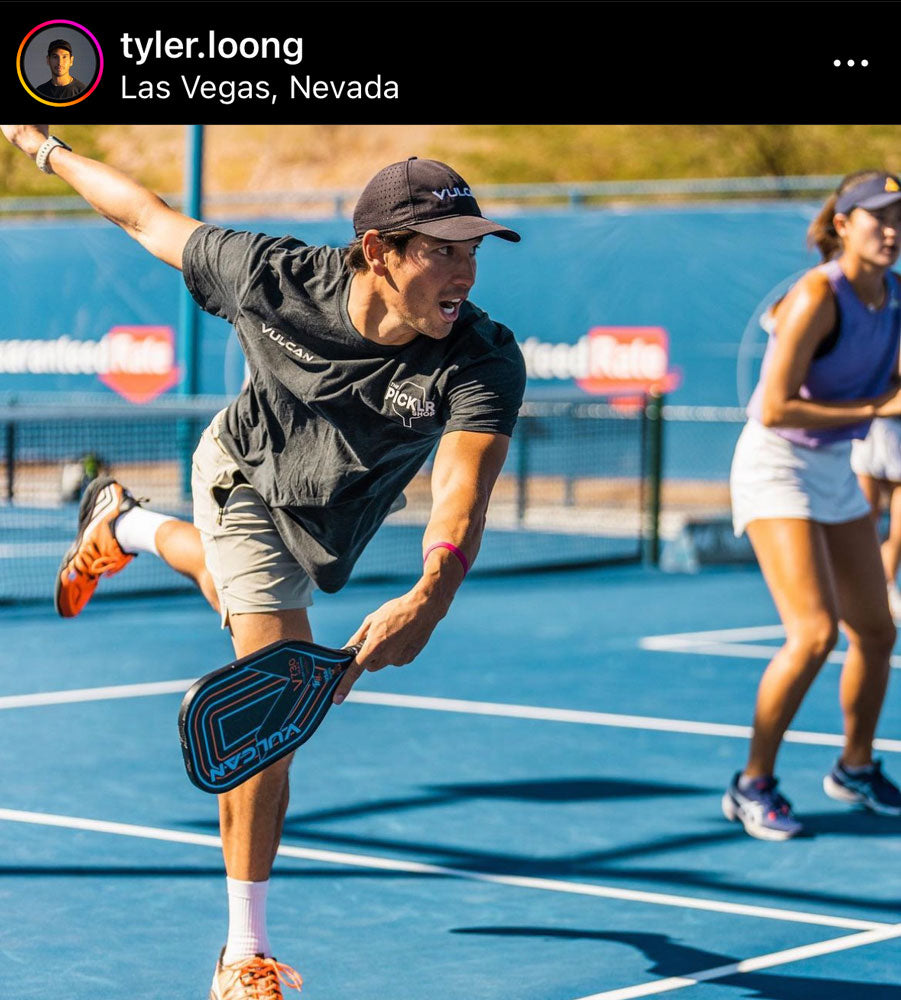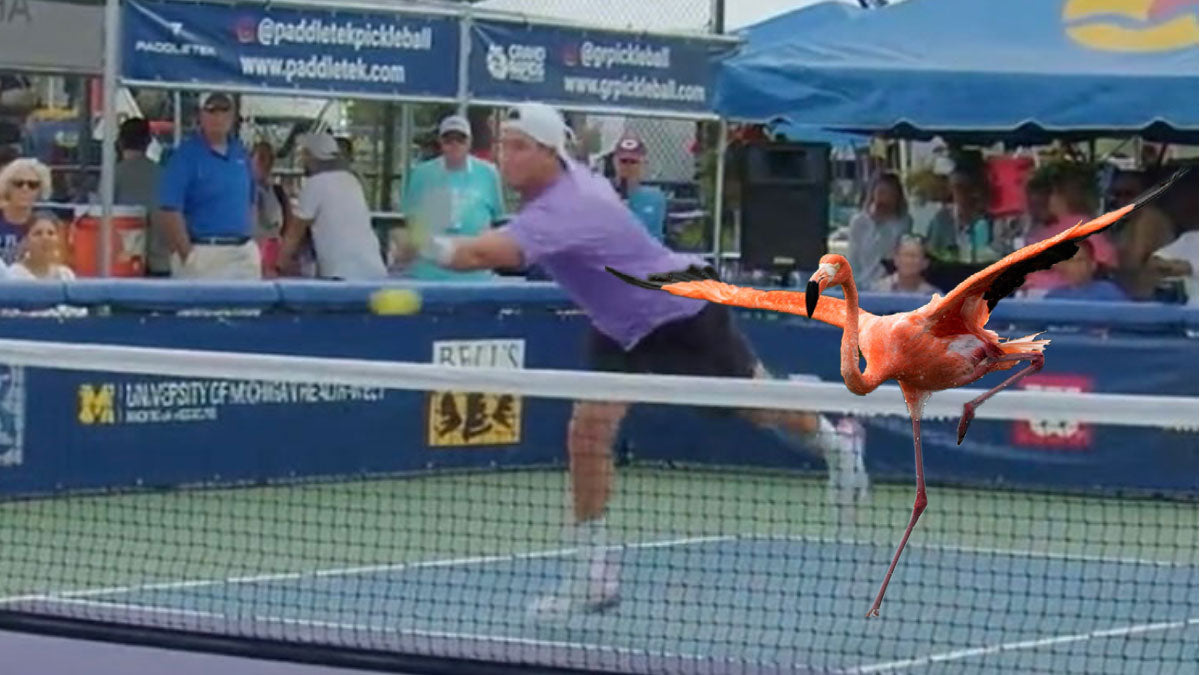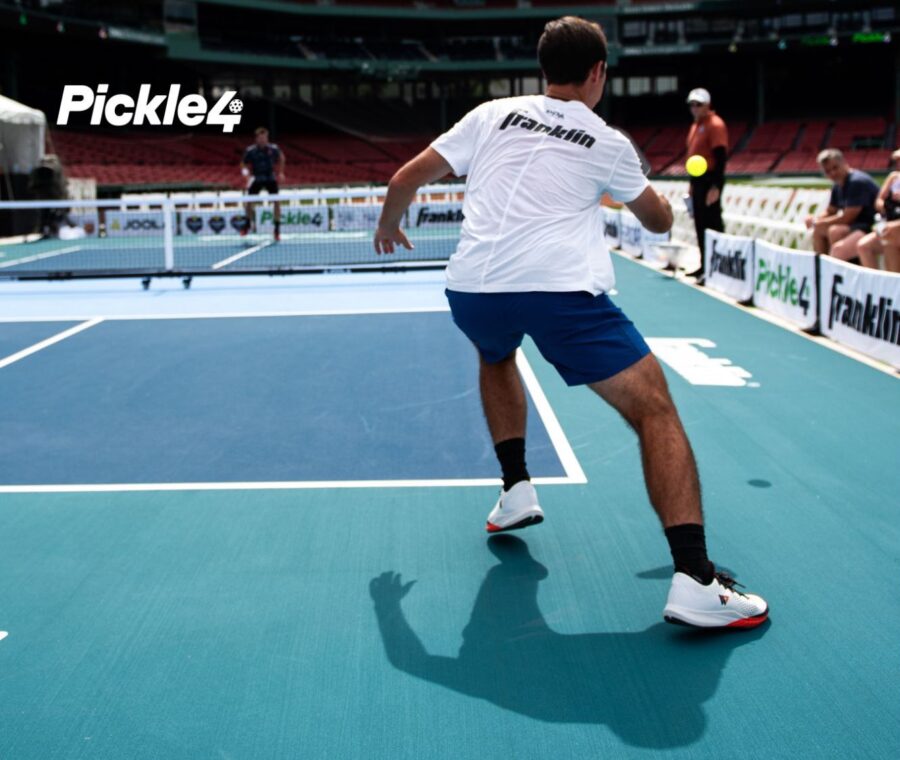Have you ever needed a little extra reach at the Kitchen line in order to hit the pickleball out of the air (as opposed to letting the pickleball bounce and giving your opponents a bit more time between shots)? Or, have you ever asked yourself, “How did my opponent hit that pickleball out of the air? I thought that was a good shot in the Kitchen.” Well, in either scenario on the pickleball court—where you need a little extra reach or you are asking yourself how your opponent had a little extra reach—the answer may be what we will call the “flamingo.”
What Is the “Flamingo” on the Pickleball Court?
As you (hopefully) know, pickleball players are not allowed to volley (hit the ball out of the air without letting it bounce) while making contact with the Kitchen. As a result, players will stand firmly behind the Kitchen line, while reaching over the Kitchen line in the air to take shots as early as possible (as most points are won at the Kitchen line).
With that said, being able to narrow the gap between the Kitchen line and the net can lead to an advantage, as you are taking away space from your opponents and making your opponents’ shots more difficult. Pickleball players look to do this with Ernes around the sides of the Kitchen and pickleball players with natural height and length have an advantage.
Another way you may be able to narrow the gap in certain circumstances is by employing the “flamingo.” The “flamingo” is a creative way to maintain a legal position on the pickleball court, while still being able to reach high shots and volleys near the net.
Like a flamingo (i.e., the pink bird) that can balance on one leg, a “flamingo” on the pickleball court requires balancing on one foot. By leaning on one foot behind the Kitchen line, players can raise their other foot into the air, which allows them to lean in and gain extra reach over the Kitchen (without having a foot fault). This technique leads to more reach than if a player kept both feet firmly planted on the ground behind the Kitchen line.

When to Use the “Flamingo” on the Pickleball Court
When to use the “flamingo” technique on the pickleball court depends on the situation. It is typically employed when a player anticipates or encounters an incoming shot that they can “put away” or go on the offensive with, but requires a little extra reach in order to avoid letting the pickleball bounce.
Like any technique in pickleball, the “flamingo” requires practice and good balance, as it involves leaning on one foot while maintaining stability and control. It is a useful skill to have in your repertoire as it allows you to effectively grab some extra shots out of the air, while maintaining proper court positioning during fast-paced exchanges near the net.
However, use the “flamingo” sparingly when you can go on the offensive and try to win the rally. This is because you are taking yourself out of the usual court positioning and it may be difficult to react to the next shot from your opponents if they are able to keep the rally alive. So, use the “flamingo” when you need extra reach to be aggressive and win the rally.




